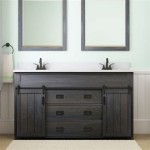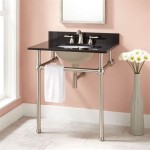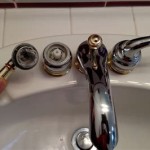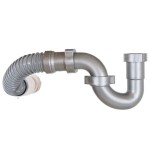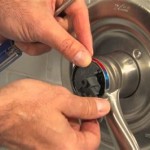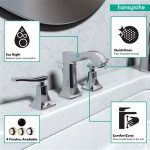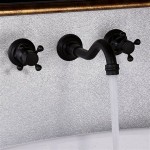How to Effortlessly Chalk Paint a Bathroom Vanity Cabinet for a Refreshing Transformation
Chalk paint, with its distinctive matte finish and ease of application, has become a popular choice for revamping furniture and home décor. Transforming your bathroom vanity cabinet with chalk paint can breathe new life into your bathroom's aesthetic, adding a touch of rustic charm or vibrant color.
This detailed guide will walk you through the essential steps of chalk painting a bathroom vanity cabinet, ensuring a successful and visually appealing outcome.
1. Preparation: The Foundation for a Perfect Paint Job
Before applying any paint, it is crucial to prepare the vanity cabinet thoroughly. Remove all hardware, such as knobs, pulls, and hinges, then proceed to clean the cabinet's surface with a mixture of warm water and dish soap. This will remove any dirt or debris that could interfere with the paint's adhesion.
Once cleaned, allow the cabinet to dry completely before proceeding to the next step.
2. Sanding: Creating a Smooth Surface for Paint Application
Lightly sand the cabinet's surface using fine-grit sandpaper (around 220 grit). Sanding creates a slightly textured surface, which will enhance the paint's adhesion and prevent it from peeling off over time.
Remove any sanding dust with a vacuum cleaner or a damp cloth.
3. Priming: A Crucial Step for a Durable Finish
Before applying chalk paint, it is highly recommended to apply a coat of primer. Primer acts as a barrier between the cabinet's surface and the paint, preventing stains and ensuring even paint coverage.
Choose a primer that is specifically designed for use with chalk paint. Apply a thin layer of primer using a brush or a roller, ensuring you cover all areas of the cabinet.
4. Chalk Painting: Creating the Desired Look
Now comes the fun part—applying the chalk paint. Chalk paint is available in a wide range of colors, allowing you to match the cabinet to your desired aesthetic.
Stir the paint thoroughly before use. Apply a thin layer of chalk paint using a brush or a sponge applicator. Use smooth, even strokes and avoid applying too much paint at once.
5. Distressing (Optional): Adding Character and Vintage Appeal
If you want to give your cabinet a distressed or weathered look, you can sand certain areas after the paint has dried. Focus on distressing edges, corners, or areas that would naturally show wear and tear.
Sand lightly with a fine-grit sandpaper until you achieve the desired distressed effect.
6. Sealing: Protecting Your Chalk Painted Masterpiece
Once the chalk paint has dried completely, it is essential to seal it to protect the finish from moisture, scratches, and stains. Apply a coat of clear wax or polyurethane using a brush or a cloth.
Allow the sealant to dry overnight before reinstalling the hardware.
Conclusion
Chalk painting your bathroom vanity cabinet is a relatively straightforward and budget-friendly way to transform your bathroom's décor. With careful preparation, sanding, priming, and painting, you can give your cabinet a fresh and updated look that will complement your bathroom's style.
Whether you prefer a classic white finish, a vibrant shade of blue, or a distressed vintage look, chalk painting offers endless possibilities to create a bathroom space that is both functional and aesthetically pleasing.

Bathroom Vanity Makeover With Chalk Paint Decor Adventures

Bathroom Vanity Makeover With Chalk Paint Decor Adventures

Chalk Painted Bathroom Vanity Makeover Our Storied Home

Blue Diy Chalk Paint Bathroom Vanity Makeover Abbotts At Home

Chalk Paint Bathroom Vanity Makeover Remodelaholic

Bathroom Vanity Makeover With Chalk Paint Decor Adventures

Blue Diy Chalk Paint Bathroom Vanity Makeover Abbotts At Home

Blue Diy Chalk Paint Bathroom Vanity Makeover Abbotts At Home

How To Paint A Bathroom Vanity Love Remodeled

Bathroom Vanity Makeover With Chalk Paint Decor Adventures Painted Diy
Related Posts
